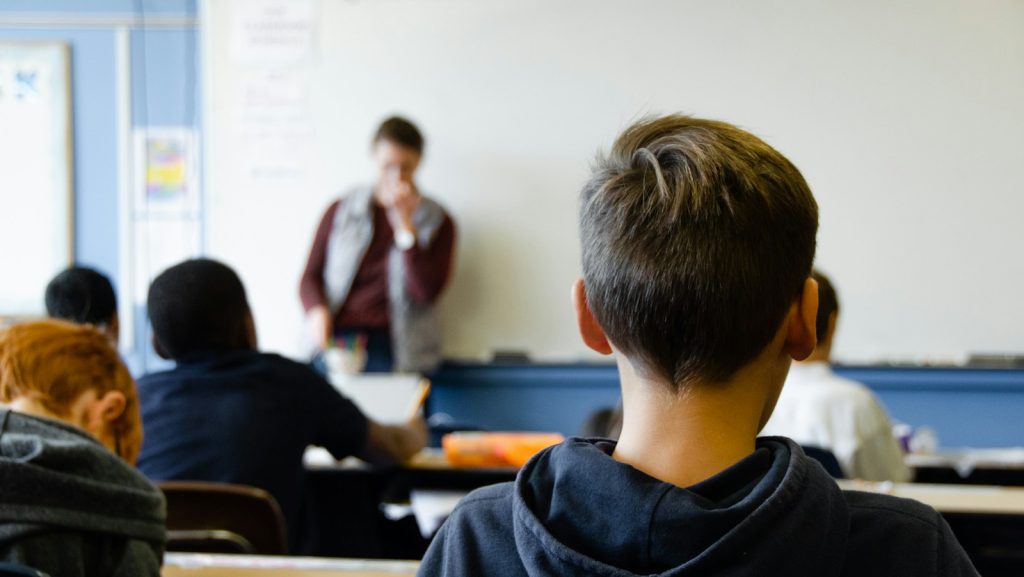Teachers concerned over rise in violent elementary student behaviour

Posted Jun 26, 2024 03:20:31 PM.
Last Updated Jun 27, 2024 11:55:35 AM.
Elementary students in the region who exhibit violent or hazardous behaviours while at school are often waitlisted to get support they need, which can take years sometimes.
A recent quarterly report from Waterloo Region District School Board shows a rise in behaviour incidents. Last year they recorded a total of 867 incidents, this year they recorded 1,067.
Both the president of the local Elementary Teachers Federation Ontario (ETFO) and the president of the local Ontario Catholic Teachers Association (OECA) said they didn’t find that number surprising. Both told CityNews 570 those numbers only account for what teachers reported.
They are calling on the province to create more supports for elementary school students and teachers.
President of the local ETFO, Jeff Pelich, said from September 2023 to April 2024 they had over 3,000 student behaviour incidents reported compared to about 2,100 during the same time previously.
“We hear from members every single day about the concerns in their classroom and it’s most frustrating for teachers because we see it as a student communicating that they are struggling that they are not getting the services they need to be successful,” he said.
Patrick Etmanski, president of the local OECA said violent incidents in Waterloo catholic schools is up 30 per cent over last year.
“For the most part, I don’t think the general public understands what we’re talking about when we talk about school violence, they think it’s about a fight in high school and that’s not what this is about. We’re talking about kindergarten kids throwing chairs or grade two students punching educational assistants, that’s the sort of thing were talking about.”
Out of 1,067 incidents reported, 786 were reported as hazardous to teachers or other students and 236 were reported as first aid incidents.
According to the report, about 47 per cent of total behaviour incidents were directed at educational assistants or child and youth workers, making up 506 incidents, while elementary teachers made up about 30 per cent of incidents at 327 incidents. Local secondary teachers had five reported incidents with students, making up just 0.47 per cent of total incidents.
Pelich said some of the reasons for the rise could be cuts to provincial services and classrooms having to grow in size.
“One of the biggest challenges that we face as a system and as a community and as a province, is that the social services just aren’t there,” said Pelich. “When a student is struggling with their mental health or their developmental needs they are placed on a waitlist for years. During that time the expectation is that they continue to go to their community school, and they can’t be turned away. When they aren’t getting the services they need – the mental health specialist, the psychiatrist, the psychologist, the social workers to help – they just are not successful and it’s concerning.”
Local teacher unions also receive monthly reports that include the number of incidents and Pelich said they show that this has been an ongoing issue they’ve seen increasing over the last several years.
While elementary student incidents reported rose by 204, secondary student incidents only increased by 4 from the same period last year.
“This isn’t about a school board, this is about a ministry of education that has constantly underfunded the kind of supports that these kids need and that’s where I want to lay the blame,” said Etmanski.
He added that they have teachers constantly calling to ask for assistance with behaviour issues in elementary school students.
Etmanski said the pandemic played a role but doesn’t know if it created the situation the teachers are faced with now.
“I just wish we could say to a parent, your son or your daughter threw a stapler and hit another kid today, we want to get him into a program or we want to offer her one on one support with a social worker, like now, not three years from now. I think that’s the bigger issue.”
Etmanski doesn’t know how to fix it other then by creating real change in the system and supporting youth with professionals.
He is urging parents to really ask their kids what happened at school that day and not just to take them for their word.
“The kids don’t come home and say hey mom guess what happened today. That’s not what happens they come home and say we got to go to the library twice this week instead of once or we got to go outside and play today. But the reason that’s happening is because there’s some sort of violence happening and the teacher has to remove them from that environment,” said Etmanski.
Both Etmanski and Pelich are calling on the province to increase supports for elementary school students and teachers.
A representative for the Waterloo Region District School Board released the following statement to CityNews 570 June 27:
“As a district we are committed to a public education system that allows all students and staff to feel safe, included and able to rise to their highest potential. The recent quarterly board report shared with Trustees focused on workplace safety and outlines the steps we are taking to equip staff to support the needs of all students
WRDSB staff are supported through legislation, training, professional learning, guidance and resources. These aim to ensure the appropriate support and planning is in place to respond to student behavioural incidents, such as emotional dysregulation. Additionally, the WRDSB Code of Conduct was developed to provide a foundation of understanding and responsibility, on which to build safe, caring and inclusive learning and working communities.
We continue to develop a holistic approach to classroom safety as we build staff capacity for supporting students and responding to behavioural issues. This includes Behaviour Management Systems (BMS) training. It supports staff in responding to behaviour in ways that maintain a safe, caring and inclusive learning and teaching environment. BMS training is mandatory for all paraprofessional staff, emergency response teams, principals and vice-principals. The training focuses on proactive and preventative measures to reduce instances of dysregulation, through de-escalation strategies. BMS training is available on a voluntary basis for all WRDSB staff.
Earlier this year, we saw education unions come together to address workplace safety. We continue to work with staff to address how we might change some structures, engage staff in further learning so that we change our approaches and do our best when possible to hire additional staff within funding guidelines, as well as support recruitment and retention of staff.
While it is true that we are no longer under pandemic restrictions, we continue to see the impact of the shutdowns on students. Particularly for those who have limited experiences in a traditional classroom environment. Around the world, we continue to see the impacts of this in the emotional dysregulation of some children. This is layered on top of the ongoing changes in public education in Ontario. Students and educators are navigating a new curriculum, changes in staffing levels and provincial funding reductions. This all has a direct impact on classrooms. In spite of these challenges, we continue to engage in the critical work of helping students uncover their curiosity, creativity and find a passion for a life of learning.
While we engage in this work together with families and caregivers to better understand students’ needs, we face significant and growing challenges as a result of funding shortfalls.
Ultimately, staffing shortages impact the number of staff available to support students.”








